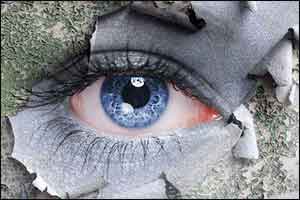- Home
- Editorial
- News
- Practice Guidelines
- Anesthesiology Guidelines
- Cancer Guidelines
- Cardiac Sciences Guidelines
- Critical Care Guidelines
- Dentistry Guidelines
- Dermatology Guidelines
- Diabetes and Endo Guidelines
- Diagnostics Guidelines
- ENT Guidelines
- Featured Practice Guidelines
- Gastroenterology Guidelines
- Geriatrics Guidelines
- Medicine Guidelines
- Nephrology Guidelines
- Neurosciences Guidelines
- Obs and Gynae Guidelines
- Ophthalmology Guidelines
- Orthopaedics Guidelines
- Paediatrics Guidelines
- Psychiatry Guidelines
- Pulmonology Guidelines
- Radiology Guidelines
- Surgery Guidelines
- Urology Guidelines
New App may aid in early prevention of dry eye disease: JAMA

Japan: The smartphone app DryEyeRhythm identified people with diagnosed and undiagnosed symptomatic dry eye and the associated risk factors, according to a crowdfunded research published in the journal JAMA Ophthalmology. The findings could play a role in earlier prevention and more effective intervention for patients with dry eye. The app, available in Japan and the US on iOS platforms, collects medical history, lifestyle information, demographic characteristics, and daily subjective dry eye symptoms.
Dry eye is a common and often chronic condition in which a person doesn’t have enough quality tears to lubricate and nourish the eye. It often causes irritation and blurred vision when there is instability in the inner layer of the tear film that protects the outside of the eye.
Takenori Inomata, Department of Ophthalmology, Juntendo University, Tokyo Japan, and colleagues assessed the characteristics and risk factors associated with diagnosed and undiagnosed symptomatic dry eye using the smartphone app DryEyeRhythm.
The study involved data from 4,454 subjects in Japan, 3,294 with risk factors for symptomatic dry eye and 1,160 without symptomatic dry eye; of the 3,294 with risk factors, 899 had diagnosed symptomatic dry eye and 2,395 had undiagnosed symptomatic dry eye. Dry eye symptoms and severity were assessed with a 12-item Ocular Surface Disease Index questionnaire.
Read Also: New smartphone app to predict dry eye disease in children
Key findings of the study include:
- The identified risk factors for symptomatic vs no symptomatic dry eye included younger age (odds ratio [OR], 0.99), female sex (OR, 1.99), pollinosis (termed hay fever on the questionnaire) (OR, 1.35), depression (OR, 1.78), mental illnesses other than depression or schizophrenia (OR, 1.87), current contact lens use (OR, 1.27), extended screen exposure (OR, 1.55), and smoking (OR, 1.65).
- The risk factors for undiagnosed vs diagnosed symptomatic dry eye included younger age (OR, 0.96), male sex (OR, 0.55), as well as absence of collagen disease, mental illnesses other than depression or schizophrenia (OR, 0.50), ophthalmic surgery other than cataract surgery and laser-assisted in situ keratomileusis (OR, 0.41), and current (OR, 0.64) or past (OR, 0.45) contact lens use.
Read Also: New Eye drops from human antibodies show promise for dry eye treatment
“This study may lead to further understanding of dry eye symptoms and identify at-risk individuals who should be clinically evaluated, potentially improving prevention or early treatment of dry eye disease,” the study authors wrote.
The adherence rate, which is important in designing research applications, was 45.8%, with 4,454 of 9,729 users participating.
“Developing a user-friendly interface, linking interactive voluntary posting functions to social media, offering feedback functions and other incentives might help to improve study adherence and completion,” the study said.
"This study’s findings suggest that crowdsourced research identified individuals with diagnosed and undiagnosed symptomatic dry eye and the associated risk factors. These findings could play a role in earlier prevention or more effective interventions for dry eye disease," concluded the authors.
The study, "Characteristics and Risk Factors Associated With Diagnosed and Undiagnosed Symptomatic Dry Eye Using a Smartphone Application," is published in the journal JAMA Ophthalmology.

Disclaimer: This site is primarily intended for healthcare professionals. Any content/information on this website does not replace the advice of medical and/or health professionals and should not be construed as medical/diagnostic advice/endorsement or prescription. Use of this site is subject to our terms of use, privacy policy, advertisement policy. © 2020 Minerva Medical Treatment Pvt Ltd